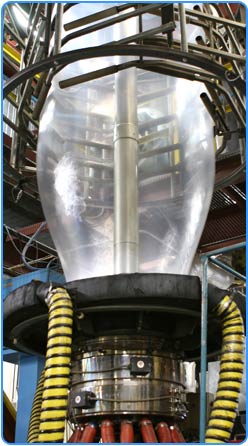Blocking in a PP/PE Blown Film Structure
- Published: July 01, 2013, By Tom Bezigian
He indicates no corona treating at all in the process and that the screw diameter is 60mm, the screw length is 30D, and die diameter is 300mm. Further, the PE processing temperature is 155-170C, while the PP processing temperature is 190-220C. He goes further to say that one extruder zone overshoots from a setpoint of 165C to 200C. The pricing of his film does not allow the use of slip or anti-block.

In the absence of two-side corona treating or contaminated resin, the blocking is due to inadequate cooling of the film. In essence, it is a heat transfer problem. This converter can raise the height of the cooling tower (if possible), slow down the line speed (not always desirable), or reduce the film thickness (not typically allowed). More air flow and probably better air distribution and a lower air temperature are required, in particular, a lower temperature of the mandrel for improved cooling of the inner layer is needed (since this is where the blocking occurs).
I find in many developing nations that the use of chilled air is not common, especially in fledgling companies. Cooling of the molten plastic is critical for many reasons, not the least of which is physical properties, followed closely by clarity and blocking.
I hope everyone is having a great summer.



